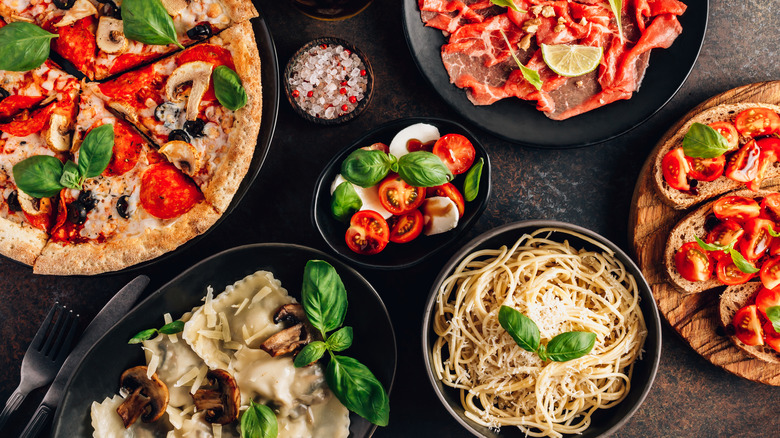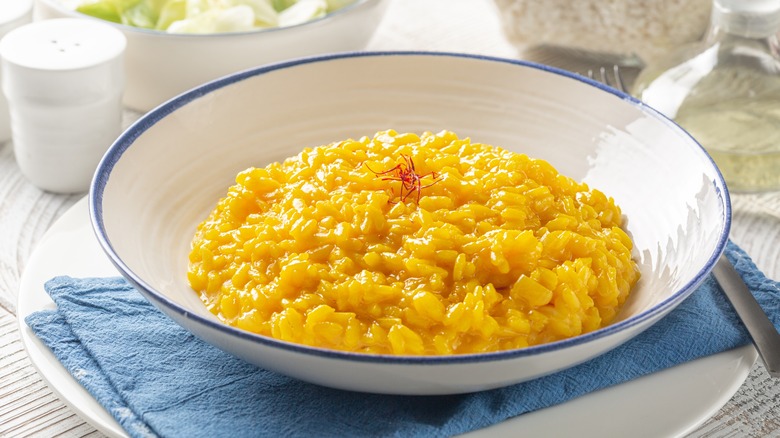The One Dish Chefs Use To Judge The Quality Of An Italian Restaurant
There are dishes you expect to see on an Italian restaurant's menu: perhaps pizza, polenta, gnocchi, and tiramisu. They're authentic dishes, but the way Americans have reinterpreted Italian classics leaves some native chefs confused and horrified. So what shouldn't you be ordering at an Italian restaurant? According to Italian chef Barbara Pollastrini, many "Italian" foods aren't served in Italy. If you want an authentic experience, she advises skipping the dishes that combine pasta with chicken — something Italians never do — and specifically calls out chicken fettuccine Alfredo (via Insider). The sauce should actually be a simple combination of butter and Parmigiano instead of the heavy, creamy sauce usually paired with fettuccine. And then there's the "crime of crimes:" a carbonara made with heavy cream instead of egg yolks.
What to order, then? Well, if you're in search of an authentic experience, look for places that have several courses on the menu. According to Cucina Toscana, the first course is antipasti, perhaps featuring cured meats like salame or mortadella, or a bruschetta. The primi course is usually a starch-based plate, like gnocchi or pasta, and then there are meat- or seafood-based secondi plates and insalata before dessert. If it seems like a lot, it is, but it's meant to be enjoyed slowly, with lots of talking. But if you want just one authentic dish that also gives you insight into the quality of the Italian restaurant and its chef, order the risotto.
You can get a clear picture of the chef and the menu with this dish
A solid litmus test for an Italian restaurant and its chef is the risotto. It can give you a good idea of the chef's time management skills, patience, attention to detail, and overall culinary prowess, which is why fellow chefs will order it at Italian restaurants, as chef Tim Kensett told Reader's Digest. What to look out for? The perfect risotto — a northern Italian specialty — should be very creamy and never stodgy, with tender grains of Arborio rice that are cooked in broth until al dente and seasoned well, perhaps with saffron or mushrooms.
Risotto isn't an inherently challenging dish to make, but it needs near-constant attention to be a success — which is why you see Gordon Ramsay lose his patience over the dish on "Hell's Kitchen." A lot goes on in a professional kitchen, and if you get distracted, you risk burning the risotto, overcooking it to mush, or rushing and serving the customer hard, undercooked rice. If you stir it too much, the rice will release too much starch and become gummy, while not enough stirring leaves it stuck to the pan. Risotto is definitely a dish that requires practice as well as constant care, which is why it only makes sense that chefs order it to judge each other's chops.

